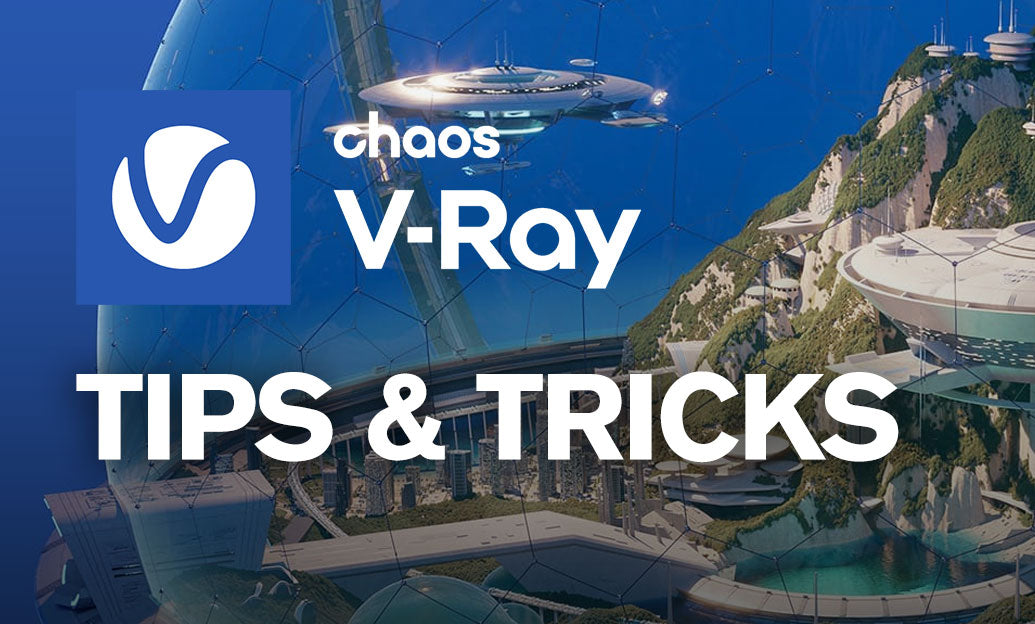Your Cart is Empty
Customer Testimonials
-
"Great customer service. The folks at Novedge were super helpful in navigating a somewhat complicated order including software upgrades and serial numbers in various stages of inactivity. They were friendly and helpful throughout the process.."
Ruben Ruckmark
"Quick & very helpful. We have been using Novedge for years and are very happy with their quick service when we need to make a purchase and excellent support resolving any issues."
Will Woodson
"Scott is the best. He reminds me about subscriptions dates, guides me in the correct direction for updates. He always responds promptly to me. He is literally the reason I continue to work with Novedge and will do so in the future."
Edward Mchugh
"Calvin Lok is “the man”. After my purchase of Sketchup 2021, he called me and provided step-by-step instructions to ease me through difficulties I was having with the setup of my new software."
Mike Borzage
Design Software History: The Evolution of Animation in Design Software: From Early Innovations to Immersive Visualization Techniques
January 17, 2025 6 min read


Introduction to Animation and Design Software
The convergence of animation and design software has profoundly transformed the way we conceptualize and create in various industries. Over the decades, animation has not only enriched visual storytelling but has also significantly influenced the evolution of design tools, ushering in an era where dynamic visualization is paramount. This intersection has enabled designers, engineers, and architects to transcend traditional static representations, offering a more immersive and interactive approach to design. The journey from rudimentary wireframe models to complex, animated simulations underscores the technological advancements that have bridged these two realms. As animation techniques seeped into design software, they opened up possibilities for simulating real-world scenarios, testing product functionalities virtually, and refining aesthetics with unprecedented precision. This fusion has not only streamlined workflows but has also enhanced the capacity for innovation, allowing for more exploratory and iterative design processes.
In today's fast-paced design landscape, the importance of animation tools in modern design cannot be overstated. They have become integral across diverse fields—from architecture, where animated walkthroughs can bring unbuilt spaces to life, to product design, where motion can illustrate functionality and user interaction. Animation facilitates a deeper understanding of spatial relationships, material behaviors, and ergonomic considerations, which are essential for creating user-centric designs. Moreover, the advent of interactive and responsive design paradigms has made animation a cornerstone in digital product development, enhancing user experience through visual feedback and intuitive navigation cues. The capability to simulate and visualize designs dynamically has revolutionized how ideas are communicated and refined, making animation an indispensable asset in the modern designer's toolkit.
Early Developments and Key Innovators
The early developments in animation and design software are marked by the contributions of visionary individuals and pioneering companies that recognized the potential of combining computational power with creative expression. One such luminary is Ed Catmull, whose work laid the foundational principles for computer graphics and animation. Catmull's development of texture mapping and bicubic patches at the University of Utah in the early 1970s was instrumental in enabling more realistic and smooth surfaces in computer-generated imagery (CGI). His co-founding of Pixar Animation Studios heralded a new era where storytelling and technology converged seamlessly. Pixar, under Catmull's technical leadership, revolutionized not only the animation industry with films like "Toy Story" but also influenced design software by pushing the boundaries of rendering and modeling capabilities.
Another significant figure is Ivan Sutherland, often referred to as the father of computer graphics, who created "Sketchpad" in 1963. This groundbreaking program introduced the concept of graphical user interfaces and object-oriented programming within design software, paving the way for future CAD (Computer-Aided Design) systems. Companies like Autodesk, established in 1982, capitalized on these early innovations to develop software like AutoCAD, which became a staple in architectural and engineering design. Autodesk's acquisition of Maya, a high-end 3D computer graphics software, further integrated advanced animation capabilities into mainstream design tools. These pioneering contributions collectively propelled the advancement of animation features within design software, transforming how designers and artists visualize and manipulate digital models.
Technological milestones during this period were critical in setting the stage for the sophisticated tools we have today. The invention of spline curves by Pierre Bézier and Paul de Casteljau in the 1960s, for instance, introduced mathematical methods for representing complex shapes smoothly, which became essential in both animation and industrial design. Early rendering techniques, such as Gouraud shading and Phong shading developed in the 1970s, allowed for more realistic lighting and surface textures in digital models. These advancements improved the visual fidelity of computer-generated images, making them more suitable for both aesthetic presentations and detailed technical analyses. The integration of these technologies into design software enabled the creation of more accurate and visually engaging models, bridging the gap between technical precision and artistic expression.
Evolution of Animation Features in Design Software
The gradual integration of animation features into traditional CAD systems marked a significant evolution in design software. Initially, CAD systems were primarily focused on facilitating precise technical drawings and 2D drafting. However, as the demand for more dynamic and realistic representations grew, developers began incorporating 3D modeling and animation capabilities. This shift allowed designers to create detailed simulations of mechanisms and structures, providing insights into how they would perform under various conditions. For example, the ability to animate the movement of mechanical parts in engineering software enabled more effective analysis of kinematics and dynamics, leading to better-designed machinery and products. In architecture, animated walkthroughs and flyovers became valuable tools for presenting concepts to clients, offering a more immersive understanding of spatial layouts and design intents.
The advancements in rendering and motion graphics have further enhanced the animation capabilities in design tools. The introduction of ray tracing, a rendering technique that simulates the way light interacts with objects, brought photorealistic quality to digital images. This technology, developed in the 1980s, has evolved to enable designers to produce highly realistic visualizations that are virtually indistinguishable from photographs. The development of global illumination and physically-based rendering algorithms has added depth and realism to scenes, accounting for complex light behaviors like reflections and refractions. Additionally, motion graphics tools have become more sophisticated, allowing for intricate animations that can illustrate complex concepts and processes. These tools have expanded the possibilities for designers to create compelling visual narratives, whether for explaining design features or for marketing purposes.
To clarify the impact of these advancements, consider the following key developments:
- Enhanced Simulation Capabilities: Integration of physics engines in design software allows for realistic simulations of material behaviors, fluid dynamics, and environmental interactions.
- Improved User Interfaces: The adoption of more intuitive interfaces, such as drag-and-drop animation timelines, has made animation tools more accessible to designers without extensive technical backgrounds.
These developments have democratized the use of animation in design, making it a standard component rather than a specialized feature. As a result, designers across various disciplines are empowered to explore and communicate their ideas more effectively through dynamic visualizations.
Impact and Current Trends
The integration of animation tools has had a profound influence on design processes across multiple industries. By enabling better visualization and simulation, animation has transformed the way designers approach problem-solving and innovation. In engineering, for instance, dynamic simulations help in identifying potential issues in mechanical systems before any physical prototypes are made, saving time and resources. In architecture, animated models allow for the assessment of how natural light moves through a space over time, influencing design decisions related to energy efficiency and occupant comfort. The ability to prototype virtually and test scenarios accelerates the design cycle, fosters experimentation, and leads to more refined end products.
Moreover, animation enhances communication among stakeholders by providing a clear and engaging representation of concepts. Clients, investors, and team members can better understand and visualize proposed designs, facilitating feedback and collaborative decision-making. The use of animation in presentations and marketing materials also helps in capturing the attention of audiences, making complex ideas more accessible and compelling. The overall impact is a more efficient, collaborative, and innovative design process that leverages the strengths of animation to achieve superior outcomes.
Current trends indicate that the future of animation in design software is heading towards greater interactivity and immersion. The rise of real-time rendering technologies, powered by advances in GPU processing and software optimization, allows designers to interact with highly detailed models without lag. This immediacy enhances the iterative process, as changes can be visualized instantaneously. Virtual reality (VR) and augmented reality (AR) are becoming increasingly integrated into design workflows, offering immersive experiences where designers and clients can explore designs at scale and in context. For example, architects can walk through a virtual model of a building, experiencing the space as if it were already constructed.
Another emerging trend is the incorporation of AI-driven animations. Artificial intelligence and machine learning algorithms are being utilized to automate animation tasks, such as generating natural-looking movements or predicting user interactions. This not only speeds up the design process but also introduces new creative possibilities. Designers can leverage AI to explore complex animations that would be time-consuming to create manually, allowing them to focus on higher-level design considerations. As these technologies continue to evolve, we can expect to see even more sophisticated integration of animation into design software, further blurring the lines between conceptualization and realization.
Conclusion
The journey of animation's integration into design software has been a transformative one, reshaping the industry in profound ways. From the early innovations of pioneers like Ed Catmull and companies such as Pixar, we have witnessed a relentless pursuit of more dynamic and realistic visualization tools. The evolution from static 2D representations to highly interactive and immersive models has enabled designers to push the boundaries of creativity and precision. Animation has become an essential element in design, facilitating better understanding, communication, and exploration of ideas. The advancements in rendering, simulation, and user interfaces have collectively empowered professionals to work more efficiently and innovatively.
Looking ahead, the future prospects of animation in design software are both exciting and expansive. The ongoing fusion of technologies like real-time rendering, virtual reality, and artificial intelligence promises to further revolutionize the design process. We can anticipate a continued emphasis on interactivity, where designs are not just visualized but experienced in ways that mimic or even enhance reality. The collaboration between technology and creativity will likely deepen, with software becoming increasingly adept at translating imaginative concepts into tangible virtual experiences. As animation tools become more sophisticated, accessible, and integrated, they will undoubtedly play a crucial role in shaping the next generation of design solutions, driving innovation across industries and redefining what is possible in the realm of design.
Also in Design News

Cinema 4D Tip: Maximizing Material Creation in Cinema 4D with Shader Graph Techniques
October 05, 2025 3 min read
Read More
Bluebeam Tip: Enhance Document Editing with Bluebeam Revu's PDF to DOCX Export Feature
October 05, 2025 2 min read
Read More
V-Ray Tip: Maximize Photorealism with V-Ray Light Selects for Enhanced Lighting Control and Flexibility
October 05, 2025 2 min read
Read MoreSubscribe
Sign up to get the latest on sales, new releases and more …


